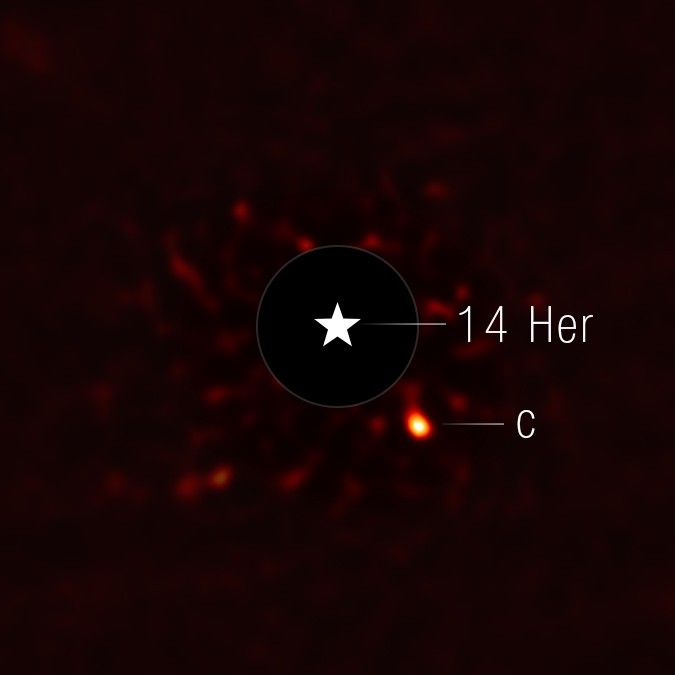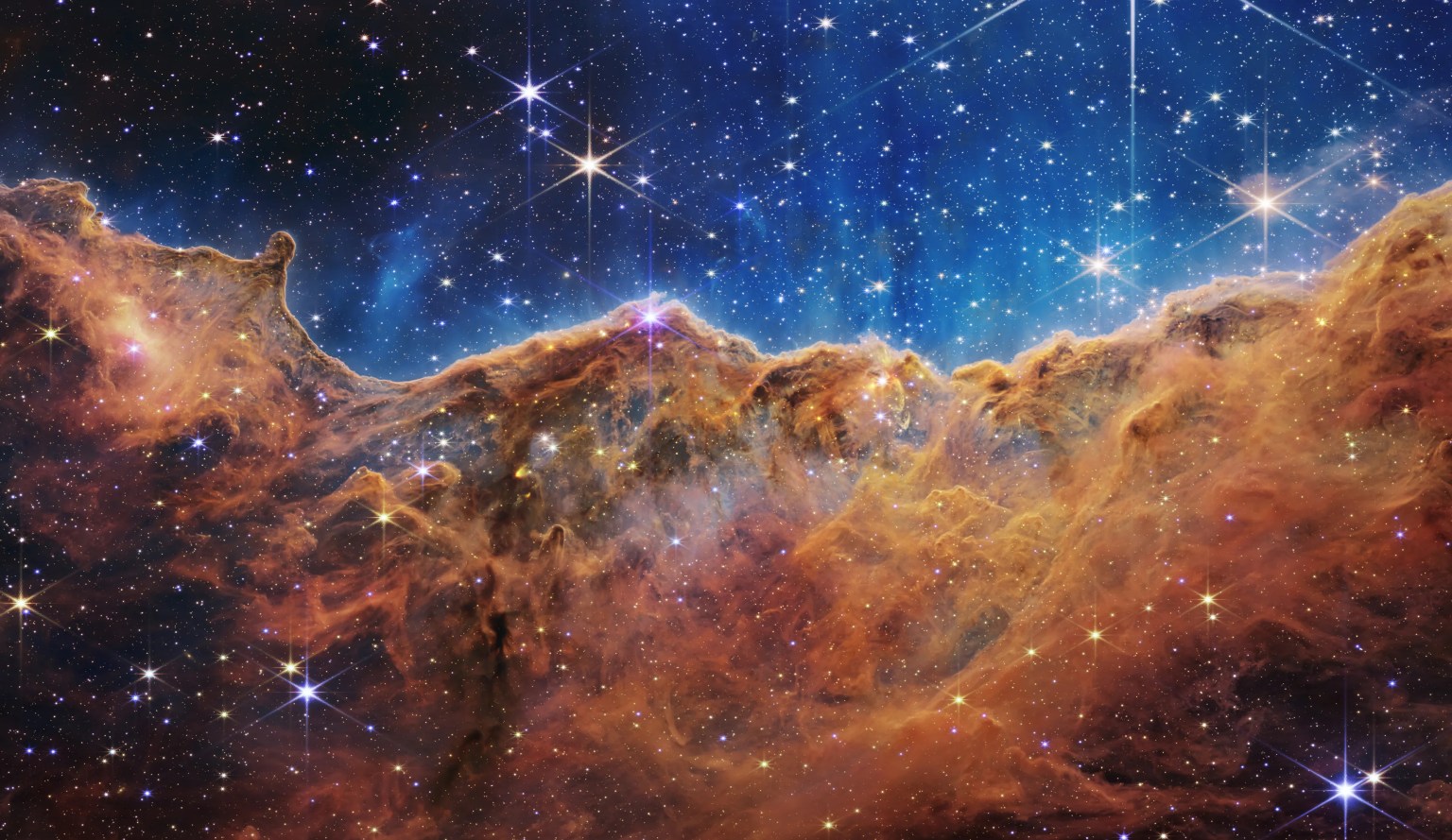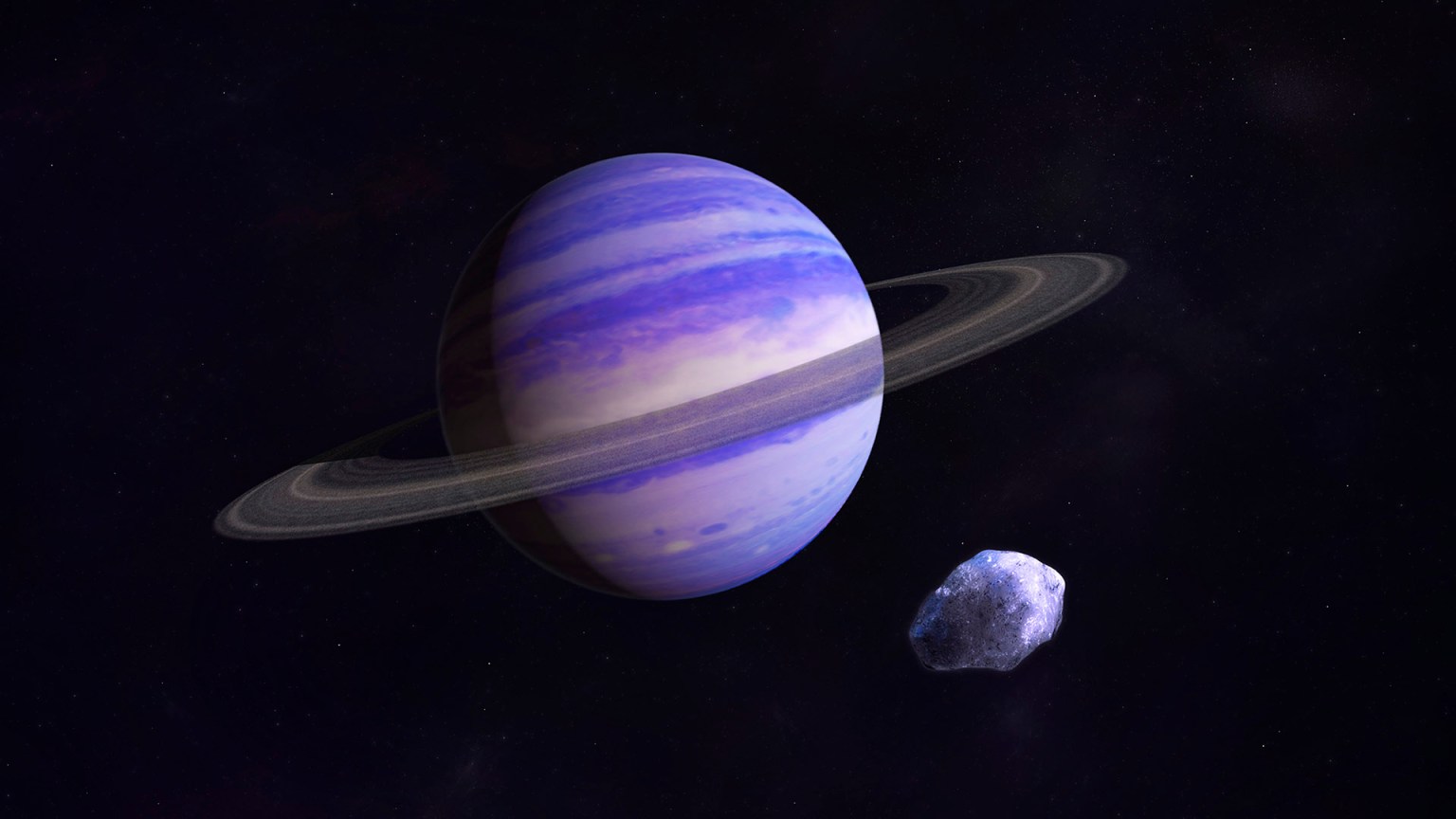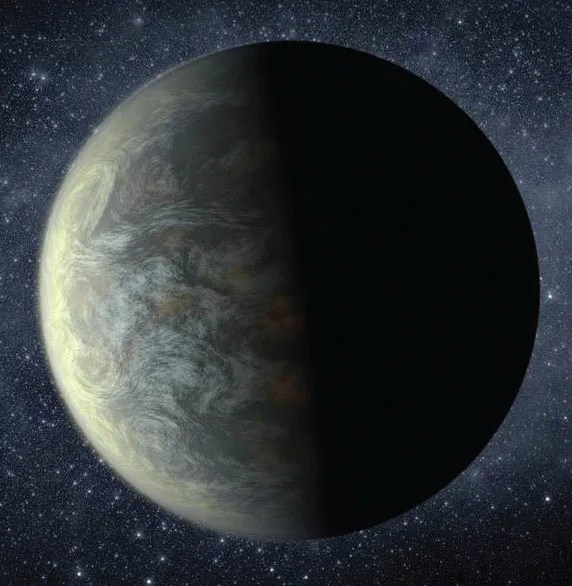Frigid Exoplanet in Strange Orbit Imaged by NASA’s Webb
- NASA’s James Webb Space Telescope has imaged an exoplanet called 14 Herculis c, which is one of the coldest planets ever directly observed.
- The exoplanet is about 7 times the size of Jupiter and orbits its host star at a distance of around 1.4 billion miles, making it much farther away from the Sun than Earth.
- Webb’s image reveals that the planet has a highly elliptical orbit, with the star being at the center, and the two planets crossing each other like an ‘X’ due to their mis-aligned orbits.
- The discovery provides insights into the formation of planetary systems and suggests that violent events in the early stages of system formation could lead to unusual orbital configurations.
- Future studies using Webb’s spectroscopic capabilities aim to better understand the atmospheric properties of 14 Herculis c and shed light on the dynamics and formation pathways of this unique planetary system.
Frigid Exoplanet in Strange Orbit Imaged by NASA’s Webb

NASA, ESA, CSA, STScI, W. Balmer (JHU), D. Bardalez Gagliuffi (Amherst College)
A planetary system described as abnormal, chaotic, and strange by researchers has come into clearer view with NASA’s James Webb Space Telescope. Using Webb’s NIRCam (Near-Infrared Camera), researchers have successfully imaged one of two known planets surrounding the star 14 Herculis, located 60 light-years away from Earth in our own Milky Way galaxy.
The exoplanet, 14 Herculis c, is one of the coldest imaged to date. While there are nearly 6,000 exoplanets that have been discovered, only a small number of those have been directly imaged, most of those being very hot (think hundreds or even thousands of degrees Fahrenheit). The new data suggests 14 Herculis c, which weighs about 7 times the planet Jupiter, is as cool as 26 degrees Fahrenheit (minus 3 degrees Celsius).
Image: 14 Herculis c (NIRCam)

The team’s results covering 14 Herculis c have been submitted to The Astrophysical Journal Letters and were presented in a press conference Tuesday at the 246th meeting of the American Astronomical Society in Anchorage, Alaska.
“The colder an exoplanet, the harder it is to image, so this is a totally new regime of study that Webb has unlocked with its extreme sensitivity in the infrared,” said William Balmer, co-first author of the new paper and graduate student at Johns Hopkins University. “We are now able to add to the catalog of not just hot, young exoplanets imaged, but older exoplanets that are far colder than we’ve directly seen before Webb.”
Webb’s image of 14 Herculis c also provides insights into a planetary system unlike most others studied in detail with Webb and other ground- and space-based `observatories. The central star, 14 Herculis, is almost Sun-like – it is similar in age and temperature to our own Sun, but a little less massive and cooler.
There are two planets in this system – 14 Herculis b is closer to the star, and covered by the coronagraphic mask in the Webb image. These planets don’t orbit the host star on the same plane like our solar system. Instead, they cross each other like an ‘X’, with the star being at the center. That is, the orbital planes of the two planets are inclined relative to one another at an angle of about 40 degrees. The planets tug and pull at one another as they orbit the star.
This is the first time an image has ever been snapped of an exoplanet in such a mis-aligned system.
Scientists are working on several theories for just how the planets in this system got so “off track.” One of the leading concepts is that the planets scattered after a third planet was violently ejected from the system early in its formation.
“The early evolution of our own solar system was dominated by the movement and pull of our own gas giants,” added Balmer. “They threw around asteroids and rearranged other planets. Here, we are seeing the aftermath of a more violent planetary crime scene. It reminds us that something similar could have happened to our own solar system, and that the outcomes for small planets like Earth are often dictated by much larger forces.”
Understanding the Planet’s Characteristics With Webb
Webb’s new data is giving researchers further insights into not just the temperature of 14 Herculis c, but other details about the planet’s orbit and atmosphere.
Findings indicate the planet orbits around 1.4 billion miles from the host star in a highly elliptical, or football-shaped orbit, closer in than previous estimates. This is around 15 times farther from the Sun than Earth. On average, this would put 14 Herculis c between Saturn and Uranus in our solar system.
The planet’s brightness at 4.4 microns measured using Webb’s coronagraph, combined with the known mass of the planet and age of the system, hints at some complex atmospheric dynamics at play.
“If a planet of a certain mass formed 4 billion years ago, then cooled over time because it doesn’t have a source of energy keeping it warm, we can predict how hot it should be today,” said Daniella C. Bardalez Gagliuffi of Amherst College, co-first author on the paper with Balmer. “Added information, like the perceived brightness in direct imaging, would in theory support this estimate of the planet’s temperature.”
However, what researchers expect isn’t always reflected in the results. With 14 Herculis c, the brightness at this wavelength is fainter than expected for an object of this mass and age. The research team can explain this discrepancy, though. It’s called carbon disequilibrium chemistry, something often seen in brown dwarfs.
“This exoplanet is so cold, the best comparisons we have that are well-studied are the coldest brown dwarfs,” Bardalez Gagliuffi explained. “In those objects, like with 14 Herculis c, we see carbon dioxide and carbon monoxide existing at temperatures where we should see methane. This is explained by churning in the atmosphere. Molecules made at warmer temperatures in the lower atmosphere are brought to the cold, upper atmosphere very quickly.”
Researchers hope Webb’s image of 14 Herculis c is just the beginning of a new phase of investigation into this strange system.
While the small dot of light obtained by Webb contains a plethora of information, future spectroscopic studies of 14 Herculis could better constrain the atmospheric properties of this interesting planet and help researchers understand the dynamics and formation pathways of the system.
The James Webb Space Telescope is the world’s premier space science observatory. Webb is solving mysteries in our solar system, looking beyond to distant worlds around other stars, and probing the mysterious structures and origins of our universe and our place in it. Webb is an international program led by NASA with its partners, ESA (European Space Agency) and CSA (Canadian Space Agency).
To learn more about Webb, visit:
Downloads
Click any image to open a larger version.
View/Download all image products at all resolutions for this article from the Space Telescope Science Institute.
Media Contacts
Laura Betz – laura.e.betz@nasa.gov
NASA’s Goddard Space Flight Center, Greenbelt, Md.
Hannah Braun – hbraun@stsci.edu
Space Telescope Science Institute, Baltimore, Md.
Christine Pulliam – cpulliam@stsci.edu
Space Telescope Science Institute, Baltimore, Md.
Related Information
Video: Eclipse/Coronagraph Animation
Webb Blog: How Webb’s Coronagraphs Reveal Exoplanets in the Infrared
Read more about Webb’s Impact on Exoplanet Research




